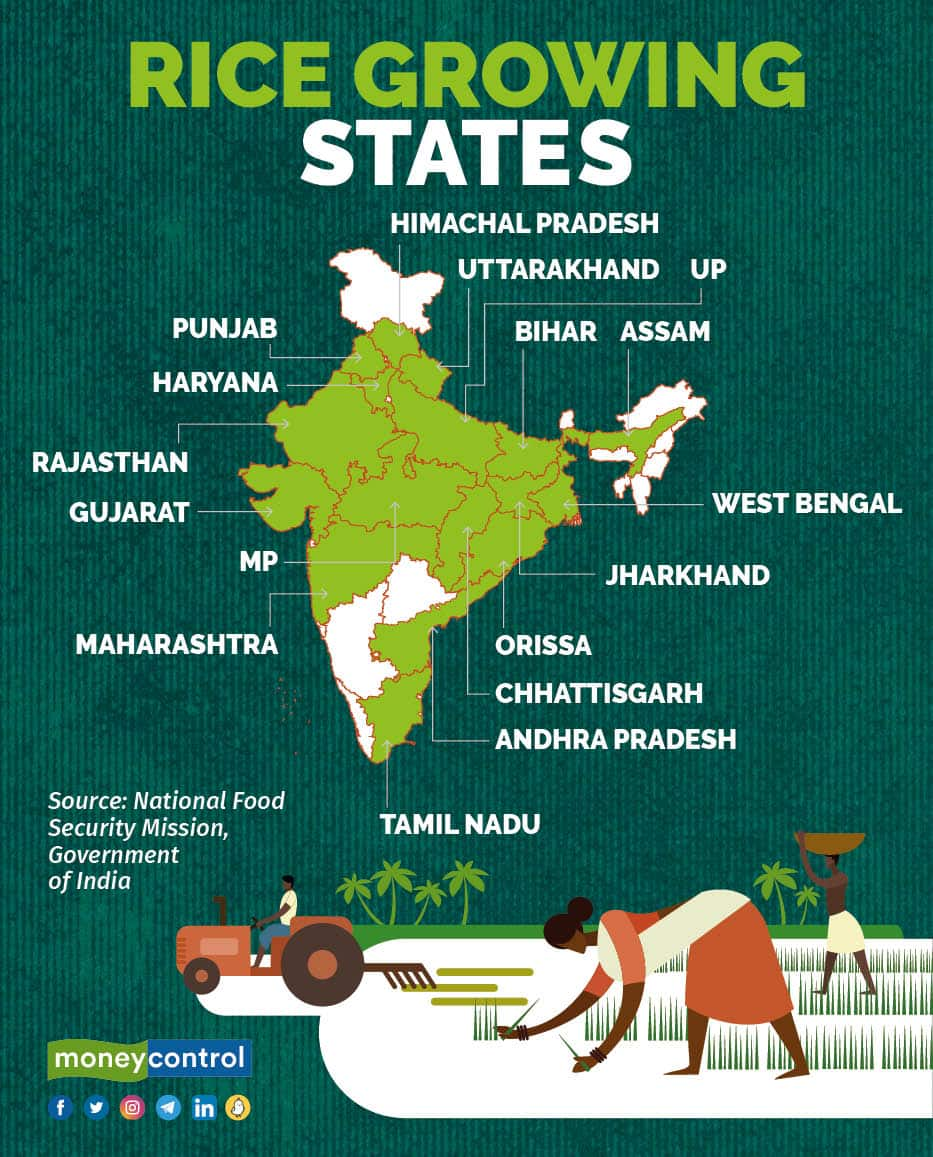



Rice is at risk if monsoon does not stabilize as rainfall has been spatial and deficient in several states this year, D K Joshi, Chief Economist, Crisil, said while speaking at a Moneycontrol panel.
“While sowing has picked up in the last week, rice remains an area of concern as stocks are 20 percent less than what we had last year,” the economist pointed out.
A delayed monsoon, with uneven rainfall distribution, has been a cause of concern this year as sowing of rice and pulses, the major kharif crops, saw a steep decline, according to data shared by the agriculture ministry on July 7.
However, as monsoon forayed further into parts of the country, the sown area for both rice and pulses has improved, as per latest data from the agriculture ministry on July 14.
 Overall kharif sowing, which was down by 8.7 percent as of July 7, has now improved, registering a 2 percent fall.
Overall kharif sowing, which was down by 8.7 percent as of July 7, has now improved, registering a 2 percent fall.
Overall kharif sowing improves
Overall kharif sowing, which was down by 8.7 percent as of July 7, has now improved, registering a 2 percent fall.
While the total sown area, as of last estimates on July 7, had dropped by 23.9 percent for rice and by 25.8 percent for pulses, the shrinkage has contracted to 8.05 percent for rice and 10.25 percent for pulses.
The reason for the lag in sowing has been attributed to low rains in the major producer states, like West Bengal, a major producer of rice, and Maharashtra and Karnataka, which together account for over 50 percent of pulse production of the country.
Meanwhile, the total sown area of coarse cereals has increased by 15.9 percent, led by Jowar (26.7 percent) and Bajra (45.7 percent). Maize sowing has been relatively lower at (-) 5.6 percent, compared with last year.
Cotton (-11.6 percent) has registered much lower sowing this year. On the other hand, the plantation of sugarcane and sowing of oilseeds are higher than last year, at 4.7 percent and 1.6 percent, respectively, a Bank of Baroda report points out.
Next two weeks critical
For the sowing of pulses and rice, the next two weeks would be critical, say economists.
“Looking at the trend, the fall in sown area is still a concern. While rains have picked up, at least 13 sub-divisions continue to be deficient. The country will only be able to match the sown area for the last year if these sub-divisions too get normal rainfall,” Jahnavi Prabhakar, Economist at Bank of Baroda, told Moneycontrol.
According to her, the next two weeks will be extremely critical. “The India Meteorological Department (IMD) has said that active rainfall will take place in the next two weeks. This is the only time when farmers can cover up for the sowing loss,” she says.
The fall in sowing area of arhar, which has declined by over 38 percent, according to a Bank of Baroda analysis, remains a huge concern. Its prices are already up 7 percent within a month and over 32 percent on year.
On the other hand, sowing in coarse cereals is up year on year, given the early rains in Rajasthan.
Reservoir storage levels inching up
In terms of storage, the reservoir level, as a percent of total capacity, stands at 33 percent, as on July 13, according to the latest data released by the Central Water Commission (CWC).
This has increased from the 29 percent storage reported on July 6, a week back, as the pace of monsoon increased.
Total live storage available in 146 reservoirs stands at 86 percent of storage of last year and 110 percent of average storage for the last 10 years.
Within regions, the northern region continues to top the charts with higher reservoir level (64 percent against 26 percent last year), followed by the central region (40 percent versus 37 percent last year) and eastern region (21 percent versus 20 percent). On the other hand, the western region (33 percent versus 41 percent) and southern region (22 percent against 52 percent) have lower reservoir level, compared to last year, an assessment by Bank of Baroda has shown.
Discover the latest Business News, Sensex, and Nifty updates. Obtain Personal Finance insights, tax queries, and expert opinions on Moneycontrol or download the Moneycontrol App to stay updated!
Find the best of Al News in one place, specially curated for you every weekend.
Stay on top of the latest tech trends and biggest startup news.